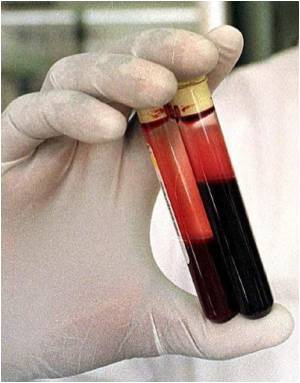
"It's a next-generation technology," said Scripps Research Associate Professor Peter Kuhn, PhD, senior investigator of the new studies and primary inventor of the high-definition blood test.
"It significantly boosts our ability to monitor, predict, and understand cancer progression, including metastasis, which is the major cause of death for cancer patients."
The new test, called HD-CTC, labels cells in a patient's blood sample in a way that distinguishes possible CTCs from ordinary red and white blood cells.
It then uses a digital microscope and an image-processing algorithm to isolate the suspect cells with sizes and shapes ("morphologies") unlike those of healthy cells.
Just as in a surgical biopsy, a pathologist can examine the images of the suspected CTCs to eliminate false positives and note their morphologies.
Advertisement
In the first study, the research team examined 83 advanced cancer patients using HD-CTC to document the test's sensitivity and accuracy for different cancer types.
Advertisement
The current gold-standard CTC test, known as CellSearch, was notably less sensitive in detecting tumour cells in these samples.
Most patients whose CTC counts surpassed the detection threshold also showed small aggregates of CTCs, which cancer biologists term "microtumor emboli."
These are widely suspected to be incipient metastatic tumors, as well as triggers for the blood clots that often kill advanced cancer patients.
In the second study, the scientists showed that HD-CTC could detect these aggregates in 43 percent of 71 patients with advanced prostate, lung, pancreas, and breast cancers, and in none of a group of 15 healthy subjects.
"This tells us that HD-CTC could be helpful in studying the origins of cancer metastases and related blood clots, and for predicting them, too," Kuhn said.
In the third study, the team used HD-CTC to compare circulating tumour cells from prostate cancer patients with cells from prostate cancer cell lines that researchers often use as convenient models for prostate cancer biology in the lab.
The team found significant differences between the two classes of cells, in their cell morphology and in the way they were labelled by HD-CTC's fluorescent tags.
In the fourth study, the researchers performed HD-CTC tests on 28 patients with advanced non-small-cell lung cancer over periods of up to a year. The team was able to detect CTCs in 68 percent of samples, and found that the numbers of detected CTCs tended to go up as other measures showed cancer progression.
In the fifth and final paper of the series, the team used HD-CTC in 78 patients who had just been diagnosed with various stages of non-small-cell lung cancer.
"We demonstrated that we could sensitively detect CTCs even in patients with early-stage cancer," Kuhn added.
The study has been recently published in the journal Physical Biology.
Source-ANI















